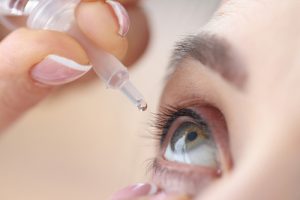Cataracts can significantly affect your quality of life. They cause blurry vision, poor night vision, light sensitivity, glare, halos, and difficulty seeing contrast.
With all these visual problems, most people who have cataracts eventually require cataract surgery. Cataract surgery is the only treatment for cataracts.
Keep reading to learn four reasons that clearer vision will change your life after cataract surgery!
When Is the Right Time for Cataract Surgery?
Cataracts develop very slowly, so it can take years before they begin to cause any visual symptoms. When your cataracts advance, you will begin to notice increased blurred vision, among other symptoms like glare and haloes.

Once your cataracts have begun to affect your quality of life, your eye doctor will recommend that you have cataract surgery. Cataract surgery will restore clarity to your vision, so you can continue doing the things you love to do without hindrance.
How Cataract Surgery Can Change Your Life
Regaining and improving your vision with cataract surgery can be truly life-changing. Here are a few ways cataract surgery can change your life:
Get Back to What You Love
When your cataracts are advanced, it can make your normal activities and hobbies more challenging. For example, activities like reading and knitting can be difficult due to the additional light needed to see.

You will also have to deal with frustrating blurry vision during these tasks. With cataracts, doing what you love can give you eye strain and headaches.
You may have even stopped participating in your favorite activities because instead of helping you relax and unwind, they cause frustration. However, once you have cataract surgery, you’ll be able to see again!
After cataract surgery, you can get back to the hobbies you enjoy. With fewer restrictions, you’ll be able to do everything you love again and may even be motivated to pick up new hobbies!
Stay Active
Fine focus tasks like reading can be a lot harder with cataracts, and so can simpler tasks. Even walking can become dangerous when your cataracts are advanced enough.

Cataracts can also make you feel less energetic since you often have to strain your eyes to see. When you’re always tired, you probably don’t even have the motivation for physical activity.
But once you have cataract surgery, you’ll be able to see again. You won’t have to strain your eyes, so you will have fewer headaches.
Without constant headaches, you’ll also have more energy to get out and about. Whether you go to the gym to stay active or just like to walk a lot, cataract surgery can help you get and stay fit and healthy!
Be Independent Again
Advanced cataracts can leave you dependent on others for basic needs. It can be hard to get around on your own and complete everyday tasks like cooking and cleaning.
Cataracts can also make it hard to drive after dark due to poor night vision and glare from headlights and street lamps. If your cataracts are that advanced, you may be confined to your home every evening.
Many people with advanced cataracts become reclusive because of poor vision. However, when you have cataract surgery, you can shed that shame and be able to do everything for yourself again!
With clear vision, you won’t just be more independent. You’ll also be free to do what you want when you want.
Being able to see again can vastly improve your mental health by enabling you to socialize and do things on your own.
Better Vision Than Ever
Simply restoring your vision to how it was before you had cataracts can be life-changing. However, with cataract surgery, you can have clearer vision than ever.
Premium IOLs can allow you to experience clear vision, eliminate cataract symptoms and correct your natural refractive error. Cataracts form when the proteins inside your eye’s natural lens break down and clump together.
In order to remove your cataracts, your cataract surgeon will remove your entire lens. Then, they will replace your natural lens with an artificial lens.

This lens is called an intraocular lens, or IOL. When you decide to get cataract surgery, you can choose whether you want a standard IOL or a premium IOL.
Premium IOLs are designed to enhance your vision by correcting presbyopia and reducing the need for other visual aids like reading glasses. With a premium IOL, you can see better than ever before!
At Sierra Nevada Eye Center, we offer several cataract surgery packages. You can get a Premium Technology Package for your cataract surgery.
Our Premium Technology Package includes a premium IOL and laser cataract surgery, which is more precise than traditional cataract surgery, enhancing your post-surgical vision even further. However, you don’t have to splurge on our most premium package to enhance your vision.
We also offer less expensive packages that can correct your astigmatism, either with the surgery itself or a premium lens called a toric lens. Whatever you choose, though, you’ll be able to see again once you have cataract surgery.
You can get your life back, so don’t wait! If cataracts have begun to affect your quality of life, make an appointment today with one of our cataract specialists for a cataract surgery consultation.
Are you experiencing cataract symptoms? Schedule a cataract evaluation at Sierra Nevada Eye Center in Carson City, NV, today!








